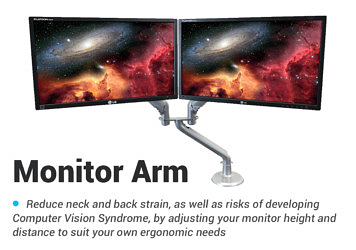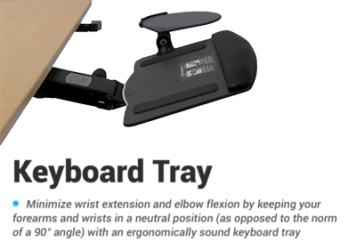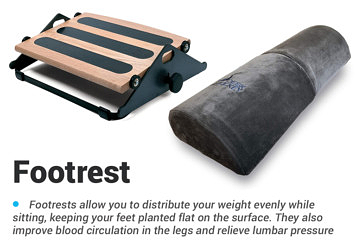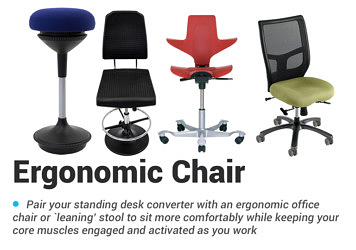iMovR Lander DIY Standing Desk Frame Review
- Lab tested
Like most reviews sites, our editorial staff and laboratory testing expenses are partially offset by earning small commissions (at no cost to you) when you purchase something through those links. Learn More

Overview
| Review Summary |
While iMovR’s Lander Desk may never have been designed for the DIY market, its overwhelming success has led to increased demand, and the creation of this DIY kit. The Lander base is simply the best DIY standing desk base available, with all of the features that set the Lander Desk apart: smartphone compatibility, an easy-to-use paddle controller, incredible stability, and ease of assembly (yes, even for the DIY version). |
|---|---|
| MSRP / List Price | $799 |
| Street Price |
2-Leg Lander base without crossbar: $799 |
| Shipping |
Ships Free via FedEx Ground |
| Warranty |
Lifetime warranty on frame |
| Lift Type |
Electric |
| Transit Speed |
1.6″ per second |
| Controller |
Bluetooth-enabled LCD Touch Paddle |
| Sizes Available |
2-Leg Lander can accommodate desktops from 41″-95″ |
| Colors Available |
Black, White, Silver |
| Construction |
Robotically-manufactured to mil-spec precision, heavy gauge steel |
| Adjustment Range |
Height range: 23.5″-49.5″ |
| Weight Capacity |
2-Leg Lander: 360 lbs |
| Connectivity Features |
Connects to Android or iOS app via Bluetooth |
| Shipping Weight |
2-Leg: 3-Leg: *Ships via FedEx |
| Power Consumption |
200W, .1W standby power |
| Typical Assembly Time |
Once frame components and controller are screwed to the bottom of your desktop(s) it takes about three minutes to insert and connect the lifting columns to the desk. For a 3-legged L-shaped desk add five minutes for attaching the side table to the main table. |
| ANSI/BIFMA Certified |
ANSI-BIFMA X5.5-2014 Certified. Significantly exceeds ANSI/BIFMA G1 Top Height Recommendation. |
| NEAT™ Certified by Mayo Clinic |
Yes |
| Competition |
Compare to Other DIY Standing Desk Frames
|
| User Reviews | See user reviews on iMovR |
| Where to buy |
Buy 2-Leg Lander on iMovR Buy 3-Leg Lander on iMovR |
Rating
| Expert Rating | |
|---|---|
| Stability | |
| Reliability | |
| Customer Experience | |
| Quality and Aesthetics | |
| Ergonomics | |
| Innovation | |
| Value | |
| Suitability for Treadmill Desking | |
| Positives | Intuitive paddle-style controller is a joy to use. App-compatibility leads to two key benefits: you can move your desk with one tap (while also adhering to UL certifications) and you gain access to optional push-notification reminders. Incredible stability, outstanding warranty. This is the easiest DIY desk assembly we've ever done, especially for the 3-Leg Lander compared to other 3-Leg bases. Both assembly and disassembly are easier than other bases, so if you ever need to move your desk in the future it's comforting to know that the task will be simple and quick. |
| Negatives | While there are no negatives with the product itself, the price tag will likely deter some from seeking the top-of-the-line Lander as their DIY standing desk base of choice. |
Bottom Line
The Ultimate Frame for Your DIY Standing Desk: iMovR’s Lander Base
Over the years we’ve reviewed practically every standalone frame kit for DIY standing desks that exists in the marketplace, and of all the manufacturers, none has offered more options than iMovR. Always on the cutting edge, the new Lander desk frame has stolen the crown of “best standing desk frame” from iMovR’s own Reliant frame (discontinued in 2018), which had stood at the top of the pyramid for more than four years prior to the Lander… errrr… landing on the scene.
iMovR customers now have the choice of the Lander electric base in 2-Leg or 3-Leg configurations. (Both have the same features and performance specs, with the only difference being that the 3-leg system has a proportionately greater lift capacity of 540 lbs.)
There are generally two reasons people decide to make their own desktop instead of buying a complete desk system. One reason is that they think they can save money by making their own (generally a misconception), for which they are likelier to pick one of the less expensive bases on the market (see our round-up of all the popular standalone desk lifts on the market).
The other reason is that they plan to invest a lot of time and/or money in either making their own very special desktop or having one custom-made for them. It’s this latter group that should consider nothing less than the Lander base frame kit, to match the elegance, and frankly the investment that they are envisioning for their desktop.
Not Your Grandfather’s Standing Desk Frame
In all deference to Oldsmobile, electric standing desk frames have only been around for a decade, so if your grandpappy had one he was probably retired when he got his first sit-to-stand desk.
Until now, DIY standing desk frame kits pretty much all looked the same and worked in the same way. You attach the lifting columns to the crossbars, attach a foot to each leg, attach the power supply and hand controller to the desktop, connect all the cables and off you go. On average, it takes about one hour to assemble the desk base and screw your desktop to it, assuming you have the right tools and aren’t intimidated by Allen wrenches.
Differences between conventional DIY electric bases are mostly a matter of lifting column performance (lift capacity, transit speed), sophistication and aesthetics of the hand controller, and stability of the overall frame. Variations in manufacturing quality abound, with a clear distinction between Chinese-made (from crappy to good), Taiwanese-made (very good) and European or USA-made (highest quality and tightest precision tolerances). See our primer on The Differences Between Made-in-USA and Imported Standing Desks for the nerdy details.
The Lander base changes the paradigm somewhat because it was originally designed for iMovR to be able to ship complete standing desks, with the frame components already attached to the 3D-laminated or real-wood tops at the factory. So the sequence of assembly has changed from building the entire base before attaching it to the top to now attaching the frame pieces and hand controller to the desktop first and then simply plugging the factory pre-assembled legs (lifting columns with feet already attached) into the frame. That last part requires no tools, no skills, and shaves your assembly time at least in half, if not more.
The following video outlines the assembly process for the 2-Leg Lander base. What we like about iMovR’s assembly videos is they show every step of the process; too many of the assembly videos we see from manufacturers these days skip over laborious albeit important steps that you’ll only later discover in the instruction manual. Especially if you’re not practiced at building standing desks of your own this video should give you complete comfort of knowing what the task will entail.
Assembly for the 3-Leg is the same with a couple of extra steps. Obviously, you have a third leg to plug into the frame. Then you must also screw the lashing plates and crossbar into the extension top. This final step is the only one you have to do “upside down” meaning getting down on your knees to drive the screws up into the desk.
This video outlines the assembly process for the 3-Leg Lander base:
State of the Art, Redefined
Let’s start with the lifting columns since, at the end of the day, they are what matters most. The Lander’s lifters are the most advanced ones made today, based on Linak DL-6 linear actuators. Highly precise, brawny (365 lb lift capacity), fast (1.6 inches per second transit speed), and remarkably quiet, these come with a 15-year factory warranty—they’re that good. They’re still considered the very best brand in the lifting base industry despite dozens of Chinese copycat manufacturers that have attempted to replicate the technology using cheap labor and less precise machining equipment—they never get even close.
Since Linak invented the electric standing desk lifting base way back in 1998, the Denmark-based company has remained the world’s leading manufacturer in the category, with some 10 million units in the field today. For the US market, Linak manufactures these columns in an impressive all-robotic manufacturing facility in Louisville, KY. You’ll find Linak actuators under the most expensive standing desk models from Steelcase, Workrite and other “commercial contract” furniture manufacturers.
The Linak linear actuators are also known for having the best available anti-collision technology that detects tilt. Indeed they performed better at backing off from chair arms, file cabinets and other obstacles than any other desk frames we’ve ever tested—including all DIY as well as full production desks.

But the technology really blows your mind when you get to the hand controller. Actually, it’s more of a high-tech “height control paddle” than a confusing cluster of membrane switch buttons. The beautiful hi-res, color display elements stand in a class of their own versus the red or green LED or low-contrast LCD readouts found on most other sit-stand desks.
Changing from sitting to standing is simply a matter of double-tapping the height control paddle upwards or downwards. No more digging around for the right button and holding it down until the desk reaches its destination height. (As a side note, be sure not to screw the paddle in too tightly when you’re installing it, or you won’t be able to move it up or down. If you do screw it in too tightly, you can simply loosen the screws until the paddle is movable).
As we explain in our primer on The Differences Between American-made and Imported Desks, for UL certification in the United States you can’t have a fire-and-forget height adjustment. Meaning you have to keep your finger on the button during the entire height change transition, for safety. When you see desks that don’t require you to hold your finger on the button, they’re probably made in China, and they’re definitely not UL-tested and certified. (If your DIY desk is going into a corporate, government or educational facility you’re probably going to need to check the UL-certified box.)
The Lander desk is the first USA-made standing desk that has fire-and-forget height change capability AND still retains UL certification, and that’s one of the many benefits of its Bluetooth sync to your smartphone. On the smartphone app, you can do all the obvious things like keeping your own height preferences stored (up to four per user) and set your health coach notification timing (read below), but you can also check the click-wrap liability waiver to allow a simple double-tap on the paddle to command the next to the next highest or lowest height preset. One really cool thing about the Bluetooth sync is that if you’re going to be sharing your desk with one or more other people, your height settings and other preferences come with you every time you re-approach the desk, re-personalizing it to your settings each time.
Standing Desks are meant to Stand – Dang it!

So often we hear “oh, I have a standing desk, but I get so busy I forget to use it”. It’s like leaving an ocean vessel docked in port… a crying shame. We always advise our readers to at least leave their desks at standing height at the end of their workday so that they’re biased to stand, not sit, first thing in the morning.
In the coolest feature we’ve seen on any standing desk—yet immensely practical—the Lander will actually remind you to stand, and gently so, at intervals that you set through the app or through the discretely hidden buttons on the paddle. You’ll get a push notification to your phone and/or notice the blinking color lights on the height paddle’s display whenever it’s time to get up.
The Lander and Lander Lite standing desks were the first to incorporate Bluetooth capability and able to sync with a smartphone app. You can read more about the app in our Lander Standing Desk Review. At the time of this writing, the app is one developed by Linak and includes a built-in “health coach” that has been shown in a recent study conducted in Denmark to increase daily standing height usage by more than 2x.
iMovR has been developing its own app, the iMovR Ergodynamics App, which was first released for their ZipDesk line. This will soon contain a driver for the Lander desks as well, giving users two choices in which app they prefer to use.
The advantage of iMovR’s own app is that it will be compatible with other Bluetooth-enabled devices the company plans to introduce in the future, including a really nifty electric monitor arm (supporting up to six LCD displays) and the next-gen ThermoTread GT Office Treadmill, among others. A single tap on your smartphone will simultaneously transmit all your preferred settings to these devices so all you have to do is tap “SIT”, “STAND” or “WALK” for example, and several motors will work in concert to reset your workstation configuration. You can read more about iMovR’s Bluetooth roadmap here.
Crossbar Optional on 2-Leg

All linear actuators have some “deflection,” typically 1.2° to 1.5° of it, which will create some instability in the desk as you near the top end of its height adjustment range. This is because the overlapping area at the ends of the telescoping tube segments starts to get small. This is inherent in all standing desks.
A quality standing desk should not need a “stability bar,” or cleverly named “artisan bar” as one vendor calls it, connected between the two bottom tubes. A quality desk base, and the iMovR bases are no exception, will have more than sufficient stability with the crossbar running between the legs’ motor housings, right along the underside of the desktop. This way the desktop lumber itself provides some added rigidity to the frame, and aesthetically it’s a lot nicer than seeing a “shin crusher” bar running between the legs about a foot off the ground.
If you’re not exceptionally tall or aren’t using a very wide tabletop you probably don’t need a crossbar, and you can save the $50 when you buy your 2-Leg Lander Base kit (the crossbar is not an optional component with most DIY bases). But if your desktop is five feet or wider then you’re probably going to want this metal reinforcement to maximize the stability of your desk. The 3-Leg Lander base kit comes standard with crossbars for added stability.
iMovR’s Unparalleled Height Range
Among their many unique attributes all iMovR electric standing desks reach up to 49-51” in max height, as they have long catered to taller individuals. This is already 3” higher than ANSI/BIFMA certification requires. But iMovR also specializes in treadmill desks, so to accommodate tall users on treadmills they are the only manufacturer that offers optional 6” leg extensions.
If you’re a particularly tall individual, and especially if your desktop is going to be very wide or very heavy—or if you’re concerned about your large LCD monitor(s) swaying at the end of a monitor arm— you might want to invest in these 6” extensions even if you don’t plan to ever get an under-desk treadmill because the extra length in the bottom tube will yield greater stability for the entire desk.
You can also add caster wheels for even more height, bumping the top end of the Lander’s range to 58”, well higher than any other standing desk will go.
ANSI/BIFMA Certified
Government and large enterprise customers often require ANSI/BIFMA X5.5-2014 Certification on any ergonomic desks that they buy, which is what kept “Big Furniture” (Steelcase, Herman Miller, et al) in a lock on 40% of the office furniture market—at least before the pandemic and the WFH boom shifting half their business to e-commerce sellers. iMovR is one of only two digitally-native standing desk manufacturers, as opposed to going through “contract office furniture dealers,” that offer BIFMA-certified products. (iMovR’s Lander, Lander Lite and ZipDesk are all BIFMA certified now.)
The fancy term “contract furniture” just means that the product has been tested at an independent laboratory to the industry’s standard for durability, reliability, stability and safety. In other words, large enterprise buyers can be assured that their BIFMA certified furniture is built to last, not fall apart quickly like many desk products that are sold online. Learn more about this subject in our primer on What is ANSI/BIFMA and How Does it Relate to Standing Desks?
At WorkWhileWalking & WorkWhileStanding we pride ourselves in our own lab testing capabilities, which while not as automated as BIFMA testing (which can take 2-3 weeks to conduct, with many thousands of repetitive test cycles at the behest of a robotic “hand”) has some more practical real-world aspects to it. For example, we test the “duty cycle” on each standing desk to see if it matches the spec. This is another shining example of the Lander’s overbuilt reliability.
Most desks have a duty cycle of 10%, meaning that when fully loaded to the desk’s maximum specified weight lifting capacity the motors can be run continuously for 2 minutes before they overheat and get shut down by either a heat sensor or current sensor. They can then take up to 18 minutes to cool down before the desk motors can be activated again. The Lander is the first desk we’ve ever tested that exceeded two minutes, going five minutes without shutting off the motors—under a full load of 360 lbs. And then it only required a few seconds of cool-down before the motors would start running again, not 18 minutes. That’s impressive.
To geek out on what actually goes into a typical ANSI/BIFMA X5.5 certification test take a look at the independent laboratory’s report on the Lander Desk.
Exceptional Warranty
The Lander base comes with an industry-leading lifetime warranty on the frame and a 15-year warranty on the motors and electronics, as well as a 100-day satisfaction guarantee. To enable such a bullet-proof warranty a manufacturer has to have tremendous faith in the componentry, precision machining and testing of the product that are reflected in the higher price you pay for a product like this.
While some of the Chinese-made competitors like UpLift and Fully (both using a lifting base manufactured by Jiecang) have upped their warranty terms to seemingly match iMovR’s, consumers should be aware that not all warranties are created equal. Some insert a bevy of carve-outs in the fine print that might leave you out in the cold if ever you run into a component failure in the future. In fact, there’s so much spin going on in warranty terms marketing claims these days that we had to write a separate primer just on How To Compare Warranty Policies Between Standing Desk Manufacturers, which we encourage the consumer to read ahead of making their final purchase decision.
Our staff experts’ advice is to always go with the higher-quality componentry of a top-shelf American or European-made base and significantly reduce the odds of ever having to deal with the immense hassle of an out-of-commission desk. Keep in mind that desks generally start to underperform before they fail, and loose manufacturing tolerances will lead to performance issues such as grease streaking, squeaking when in transit, and increasing shakiness over time.
How the Lander Base Compares to the Other iMovR Standalone Electric Desk Lifts
When iMovR originally announced the Lander Desk in early 2018, they never intended to sell it standalone, since its primary feature was enabling complete factory pre-assembly of a standing desk. The DIY crowd quickly voiced the demand for the base kit despite iMovR’s marketing plans, and so they have responded by releasing the 2-leg kit in 2019 and the 3-leg kit in 2021. iMovR does, however, continue to make three other electric standing desk base kits for DIY desk builders, so let’s see how these compare.
There’s the Lander Lite, which carries 90 percent of the Lander’s technology with less lifting capacity and a lower price.
iMovR also offers the Freedom Standing Desk Base, which is the lowest-cost high-quality base made in the USA. Same precision robotic manufacturing, same 15-year warranty, but it is decidedly a no-frills option. The height controller has a simple LCD readout with two programmable height settings. The maximum desktop width is 6-feet versus the Lander’s 95″ limit.
There is also iMovR’s Studio 470 Standing Desk Base. The Studio 470 base was designed for one purpose: to make a high-quality yet inexpensive small-sized standing desk. A supremely lightweight design is easy to handle and perfectly suited to the compact footprint. It is not the base to place under a large, heavy desktop, or to be used with a lot of desktop equipment. If you’re looking to make a fast and simple compact standing desk for use with a laptop setup or minimal computer gear this new robotically manufactured base gives cheap Chinese-made DIY frames a serious run for the money.
Then There’s the Price
We couldn’t find fault with any of the Lander’s features, but be prepared to pay for this level of technology and quality. The 2-Leg Lander base kit sells for $799 (or $849 with the added adjustable-length crossbar) while the 3-Leg Lander base kit sells for $1,448. These prices set them at the top of the pyramid in leading-edge features but also a couple of hundred bucks more than the next-best DIY standing desk base.
At the risk of being repetitive with what we’ve said above, the decision to invest in a Lander base versus all other base frame kits on the market should be a simple one. If you’re going to invest a lot in the desktop it would be a shame to put anything but the most capable and reliable lifting base underneath it. Or if your desktop or the equipment you plan to place atop it are particularly heavy, the reliable 365 lb. lift specification on the Lander desk may be the forcing function in your decision. We’ve lab tested dozens of standing desks since 2013 and too often we see lifting capacity specs on Chinese-import bases that just don’t prove out under real world conditions.
The built-in Bluetooth features, including the opportunity to sync the desk to numerous new standing desk and treadmill desk accessories we’re already seeing coming out in the next year or two is just super cool. And worth a few extra bucks to future-proof your workstation.
For more information on DIY standing desk bases, check out this comprehensive guide.





2 Comments
Leave a response >